Harvesting in the garden is a joyful event. People reap the benefits of their labors and make preparations for the winter. After harvesting, gardening is not over. Trees, shrubs and plants need to be carefully prepared for winter. They need effective prevention of possible diseases. Such prevention was the treatment of the garden in the fall from pests and diseases urea.
Content
- 1 What is urea
- 2 What does urea treatment give?
- 3 Features of nitrogen prevention in the fall
- 4 How to prepare carbamide for spraying
- 5 Pest management
- 6 Disease elimination
- 7 Preliminary work
- 8 The scale of wood processing
- 9 Safety precautions
- 10 Soil application
- 11 Dates for urea treatment in autumn
- 12 Reviews
What is urea
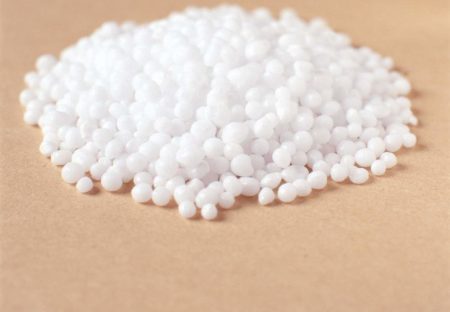
Urea is a product of the synthesis of two chemicals. Its formula includes ammonia and carbon dioxide. It is also called urea. She looks like white granules. The granules have a crystalline structure and are odorless. This nitrogen-containing compound is useful for these types of garden crops:
- apple trees;
- drain;
- apricot;
- gooseberries;
- strawberries, strawberries, raspberries;
- all vegetables.
What does urea treatment give?
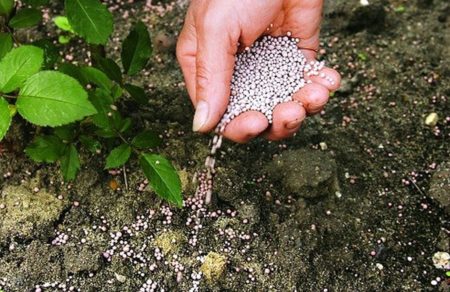
Urea is used in horticulture as an organic fertilizer with mineral components. The action of this concentrate is quick, and it retains its properties for a long time. Its weathering also occurs quickly. Urea needs to be processed not only foliage and tree trunks, but also the soil. For the same reason, it is introduced into greenhouse and greenhouse soil. When used correctly, the substance stimulates the growth and development of plants, nourishing them with nitrogen, necessary for their full life.
Urea treatment of trees is safe in the fall. In autumn, the foliage will not burn if the concentration of the substance is slightly higher than normal. Trees and plants absorb nitrogen better after harvest: during the summer season, all crops lose a lot of energy. They need useful substances that will support them in the transition to a state of suspended animation.
Urea inhibits vegetative processes and does not allow early flowering in spring. There are varieties of plums, apricots and peaches that ripen early. For them, autumn processing is necessary so that they do not bloom during the period of dangerous spring frosts.
After treatment with urea, harmful insects and fungal spores die. If there are old stumps on the site, urea will help get rid of them. Under its influence, stumps decompose and rot faster.
Features of nitrogen prevention in the fall
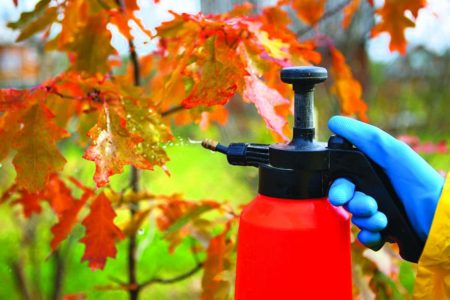
When spraying the garden with urea in the fall, a number of rules must be observed. The soil is carefully loosened, the old bark and dry branches are removed from the trees. Processing is carried out in good weather, on a clear and calm day. For a full spray, it is better to buy a spray bottle. It is very convenient: when you use it, you can reach the highest tree.
When working with urea, you need to monitor how much substance gets into trees, plants and soil. It is important to follow the rules for its use, so as not to harm garden crops.
If urea is treated in the fall, the likelihood of rain or other precipitation is high. After rain, the procedure will have to be repeated, because water washes away all the nutrients. You need to spray trees in the second phase of leaf fall or after it ends.
How to prepare carbamide for spraying
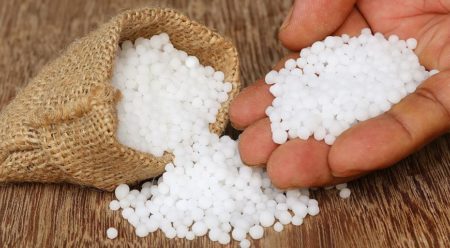
Preliminary calculations show that about 10 kg of urea should be taken per 10 liters of water.The composition is mixed and filtered through gauze tissue 2-3 times.
From diseases caused by harmful insects, 700 g of urea and 50 g of vitriol, diluted in 10 liters of water, help well. The mixture nourishes the soil and destroys all pests.
Pest management
Apple processing and other fruit trees in autumn are carried out from the calculation indicated earlier (0.5 kg of substance per 10 liters of water). If there are a lot of insects, you need to calculate how much solution you need to process 10 m2 of the garden. Usually, this is 2.5-3 liters of substance. This amount is enough to prevent and destroy pests that have remained in the ground after the summer.
Disease elimination
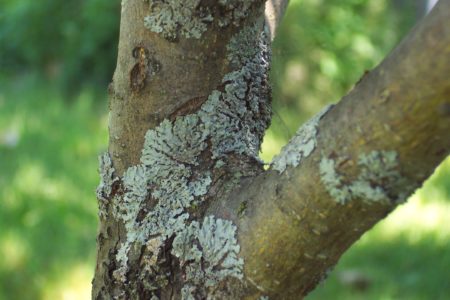
Spraying the garden with carbamide helps eliminate the following diseases:
- all kinds of spotting;
- scab;
- monilial burns.
The solution is diluted in the same concentration that is used to control insects. Composition watered the leaves of trees and shrubs. In the sprayed foliage, fungal spores die quickly.
Preliminary work
Before spraying fruit trees with urea, they pay attention to their bark. Sick areas of the cortex are removed so that the substance can penetrate into those areas where pests can hide. Foliage on trees and bushes does not need to be picked, even if it has signs of illness. Ammonia-sprayed leaves are a useful compost for the garden. Dead and diseased bark can be removed with a metal brush.
The scale of wood processing
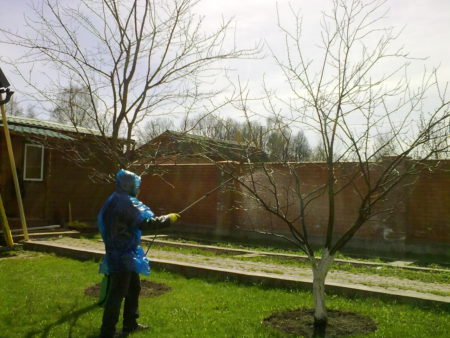
So, when treating trees with urea, the solution is sprayed:
- trunk;
- crown;
- foliage;
- areas under the bark;
- fallen foliage;
- soil around.
With careful observance of this algorithm, there is no doubt in the effectiveness of the solution.
Safety precautions
They work with urea in compliance with safety regulations. The gardener puts on a respirator or a gauze bandage folded in several layers. You will also need eye protection glasses and tight rubber gloves. After finishing work, wash your hands and face under running water. Shoes are thoroughly cleaned and clothes are washed.
Soil application
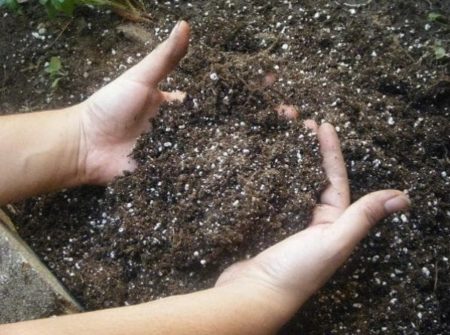
If garden crops lack nitrogen, they grow poorly and their foliage turns yellow and curls. In severe cases, a critical drop in productivity with early shedding of fruits is observed.
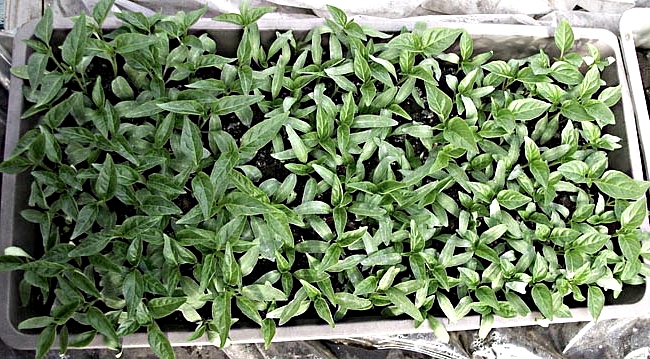 You may be interested in:
You may be interested in:There are several dosages of urea, which are used in the processing of the garden and the garden with urea:
- potatoes, onions, tomatoes, all kinds of cabbage, peppers - from 20 to 25 g per 1 m2;
- cucumbers, all types of legumes - from 5 to 8 g per 1 m2;
- gooseberries - 10 g of substance per 10 liters of water;
- blackberries, strawberries, strawberries - 35 g of urea per 10 liters of water (1 liter of solution for each bush);
- for zucchini and eggplant, you need from 10 to 12 g of urea per 1 m2;
- for currants - 20 g per 10 liters of water.
Dates for urea treatment in autumn
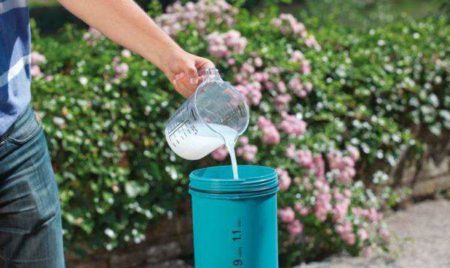
It is better to start processing in late autumn, when the foliage from the trees falls. The best time for the procedure, gardeners consider the end of October and the beginning of November. At this time, harmful insects begin to prepare for the winter, so they need to be destroyed as quickly as possible.
Reviews
Vitaliy (Rostov):
“This summer, a scaffold attacked the apple orchard. I managed to save the harvest, but I was afraid that next year the invasion of the pest would repeat. A friend advised treating the trees with urea. I have always been against "chemistry", but he explained to me that urea is organic, but with mineral elements in the composition. Last fall, I processed all the apple trees, not missing a single detail.He sprayed foliage, bark and even the earth around the trees from the spray gun. The trunks of apple trees whitewashed. In spring, the trees seemed to come to life, the flowering was simply fabulous. "The apples grew huge and juicy, and there were no more pests in this quantity."
Elmira (Kazan):
“I have a summer cottage on which gooseberry bushes grow. Over time, the berries became smaller. Later, I noticed that my gooseberry became quite frail: the leaves turn yellow ahead of time, fall off and curl. It turned out he lacked nitrogen. In the fall, I treated all the bushes with urea. Before treatment, thinned shrubs, cut dry and diseased branches. The next year, gooseberries turned green, as if for the first time. The berries were not very large, but they became much larger. Now I will regularly carry out such treatment every fall. ”
Urea or urea is a useful substance that is necessary for trees, shrubs and plants. With regular and proper processing, it will destroy all pests and help preserve the crop.

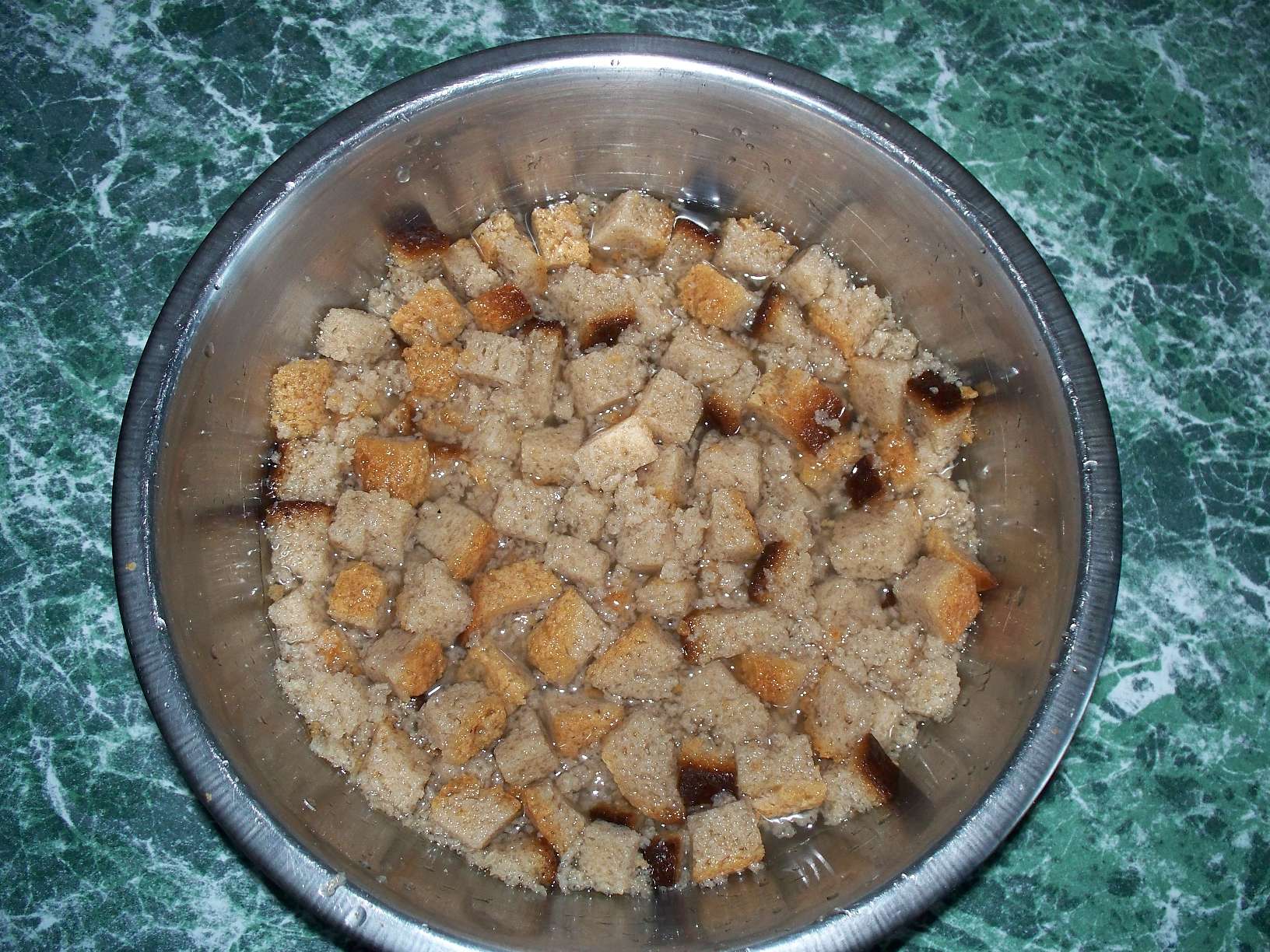 How to make bread infusion for feeding cucumbers
How to make bread infusion for feeding cucumbers Superphosphate: what is it and how to apply it
Superphosphate: what is it and how to apply it What problems can be expected from siderats?
What problems can be expected from siderats? Secrets of the collection, storage and use of eggshells in the garden
Secrets of the collection, storage and use of eggshells in the garden